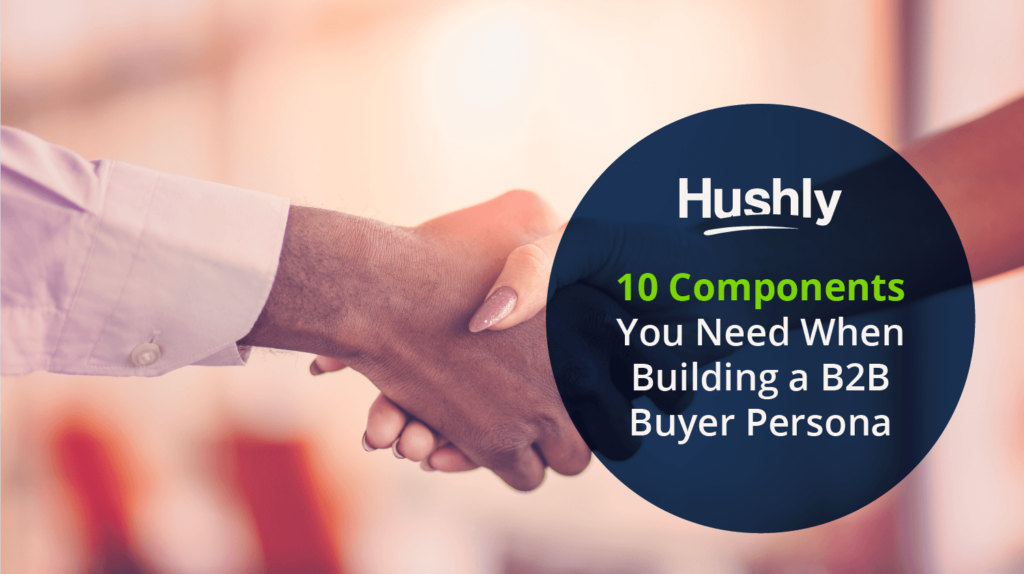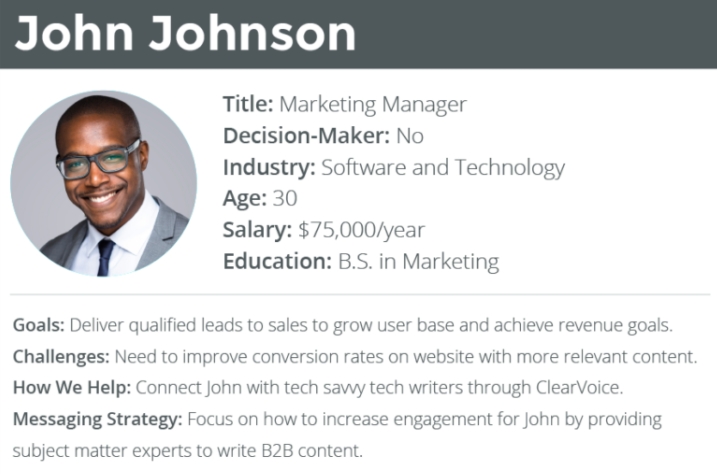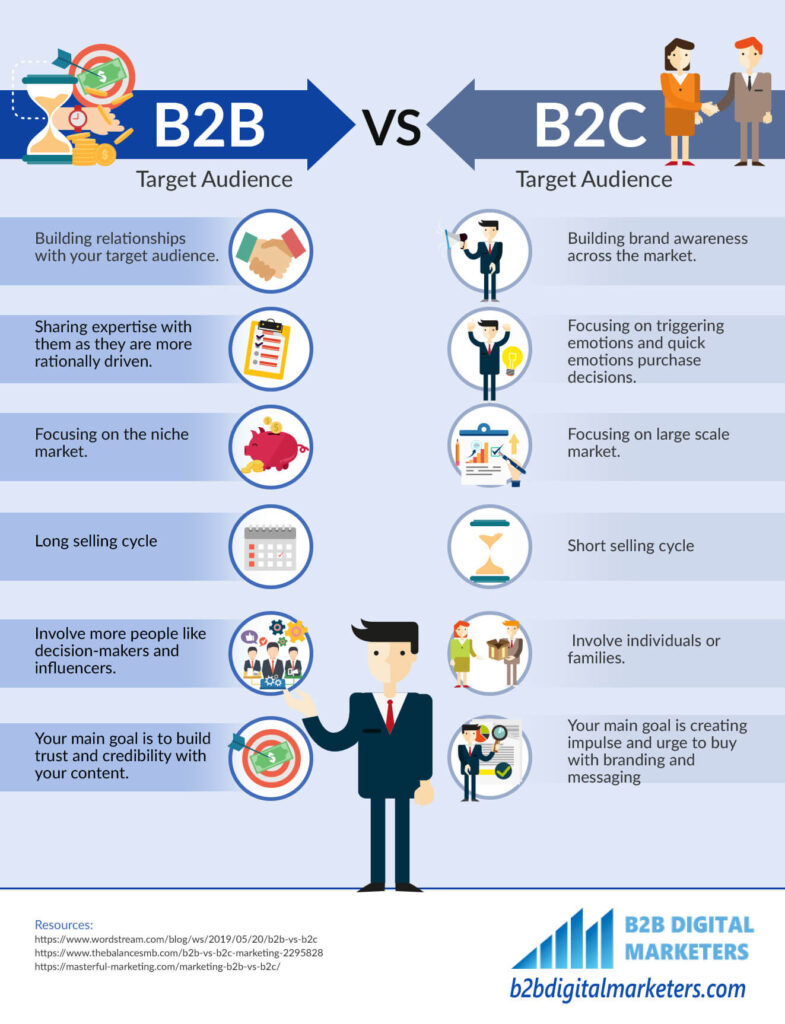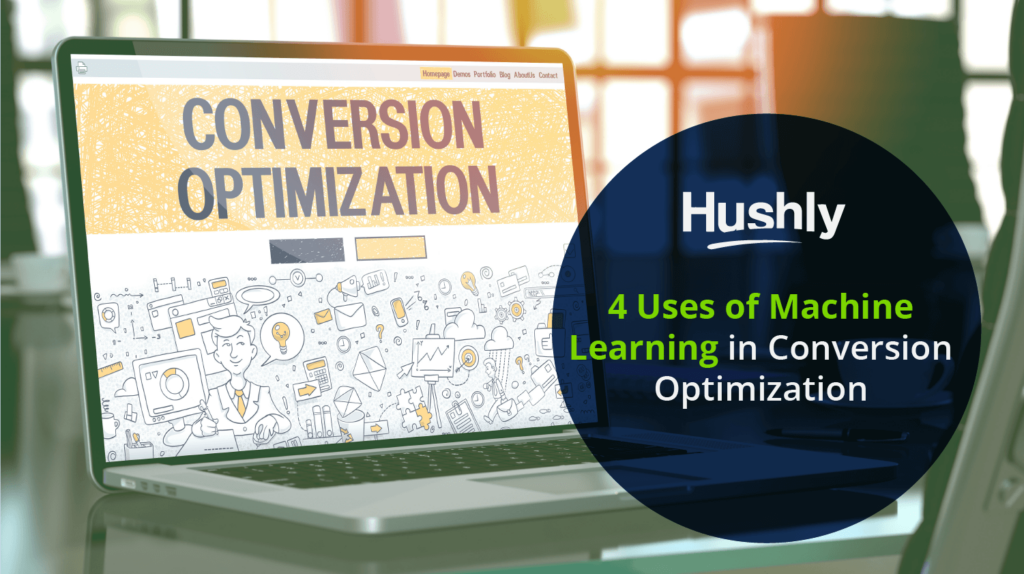Filters
Content Type
Topic
10 Components You Need When Building a B2B Buyer Persona

To build a winning B2B sales strategy, you must first create a strong buyer persona. But to do so, you need to know who your ideal prospect is.
By understanding your buyer persona, you can develop your messaging to highlight your company's products and services and build a more relevant experience for your prospects.
Building a B2B buyer persona isn't complicated. However, it's essential to understand what a B2B buyer persona is and why it's so crucial for your brand.

What is a B2B Buyer Persona?
A B2B (business-to-business) buyer persona is simply a detailed outline of who your ideal target audience member is.
When you build a buyer persona, you're providing a detailed description of your ideal customer. It's a snapshot of your ideal prospect's needs, challenges, and frustrations.

By doing so, you can develop a persona that represents your target audience and create a more targeted and relevant experience for them.
Why is Having a Well Defined B2B Buyer Persona Important?
A vital part of B2B commerce is knowing who your audience is, and yet, studies show that 60-70% of B2B marketers say they do not genuinely understand who their buyers are.
Building B2B buyer personas can remedy this situation quickly.
Not only that, but B2B brands that utilize personas can generate higher quality leads and have shorter sales cycles since they have a better understanding of their target audience.
Building a B2B buyer persona is a critical step in the buyer journey. It's also one of the most effective ways to personalize B2B commerce.
Building a B2B Buyer Persona: # Elements You Need
Building a B2B Buyer Persona can be a confusing process if you haven't done it before. But the good news is, there are ten essential elements you need to think about to build a successful B2B buyer persona.
1. Buyer Demographics
Buyer demographics are the foundational elements of your buyer persona. They provide your sales team with a detailed snapshot of your ideal customer. B2B demographics typically include information such as:
- Industry
- Location
- Age
- Gender
- Education
By outlining this information, you can begin to build a clear picture of your ideal prospect.
2. Goals
When building a buyer persona, it's essential to know what your prospects are trying to accomplish. Unlike B2C audiences that are looking for a product or solution to solve a persona problem or read a personal goal, a B2B consumer is often trying to achieve a high-value objective for the business they are working for.

To achieve this, they need to solve a specific problem.
For example, you may have a prospect that's trying to increase their sales. In that case, they may need to develop a solution to improve their sales process.
If that's the case, you can use this information to develop your messaging.
3. Pain Points
Pain points are problems that your audience needs to solve. B2B buyers often struggle with complex processes, and therefore, they need help in solving these processes.
When building a B2B buyer persona, you want to make sure you are highlighting their pain points and how exactly you can solve them.
4. Obstacles/Uncertainties
While you may think obstacles and uncertainties are the same as pain points, they are not.
Obstacles are the barriers that prevent your prospect from achieving their goals, while uncertainties are the things that can affect your prospect's ability to achieve their goals. Remember, pain points are problems, whereas obstacles and uncertainties are hesitancies keeping them from attempting to solve the pain points and reach their goals.
5. Keywords
Keywords are the words and phrases that your audience is using when searching for a product or service. These are important to know because they can reveal a lot about your prospect.
As a marketer, you need to know what your audience is searching for to make your messaging more relevant.
6. Language Style/Preferences
When you think language, you likely think about the language your audience uses to speak. That information should be factored into your demographics.
Language style and preferences should identify the linguistic styles of your ideal audience, as in, are they more formal when speaking, or are they more casual? This is essential to know because it will help you when it comes time to craft your marketing content, so you can ensure that you're speaking to them in a manner they can relate to.
7. Communication Preferences
When building a B2B buyer persona, communication preferences tend to refer to the methods in which your audience prefers to communicate with the brands they do business with.
Do they prefer email? Or a more traditional phone call? These can vary a lot depending on your audience. However, it's essential to know what they prefer so that you can target your content and messaging appropriately.
8. Online Platforms
With more and more people spending their time online, you'll want to know what platforms your audience uses. This is a must when building a B2B buyer persona. Not only will it help you target your content, but it will also help you determine what platforms you need to be on.
9. Their Role
Remember, a B2B customer is someone who is making a decision for another business. That means you need to identify their role in the business, whether decision-makers or implementers.
This will help you determine what types of content you need to develop. For example, if they are implementers, they're likely to be more interested in educational and instructional content. On the other hand, if they are a decision-maker, they will be more interested in content that demonstrates your product or service.
10. Barriers
Finally, you want to make sure you take the time to outline possible barriers that could potentially stop them from making the conversion from lead to paying customers. By identifying these potential final barriers, you will be more apt to develop content that can help your prospects overcome these barriers, and ultimately, close the deal.
Personalize Your B2B Buyer's Experience with Hushly
Building a B2B buyer persona is a critical part of your strategy.
By doing so, you can develop a more personalized strategy and content that is both relevant to your audience and drives them to the actions you need them to take.
Need help further developing your personalization strategies? Download your copy of the eBook, "5 Personalization Strategies that Dominate in B2B."
The post 10 Components You Need When Building a B2B Buyer Persona appeared first on Hushly.



